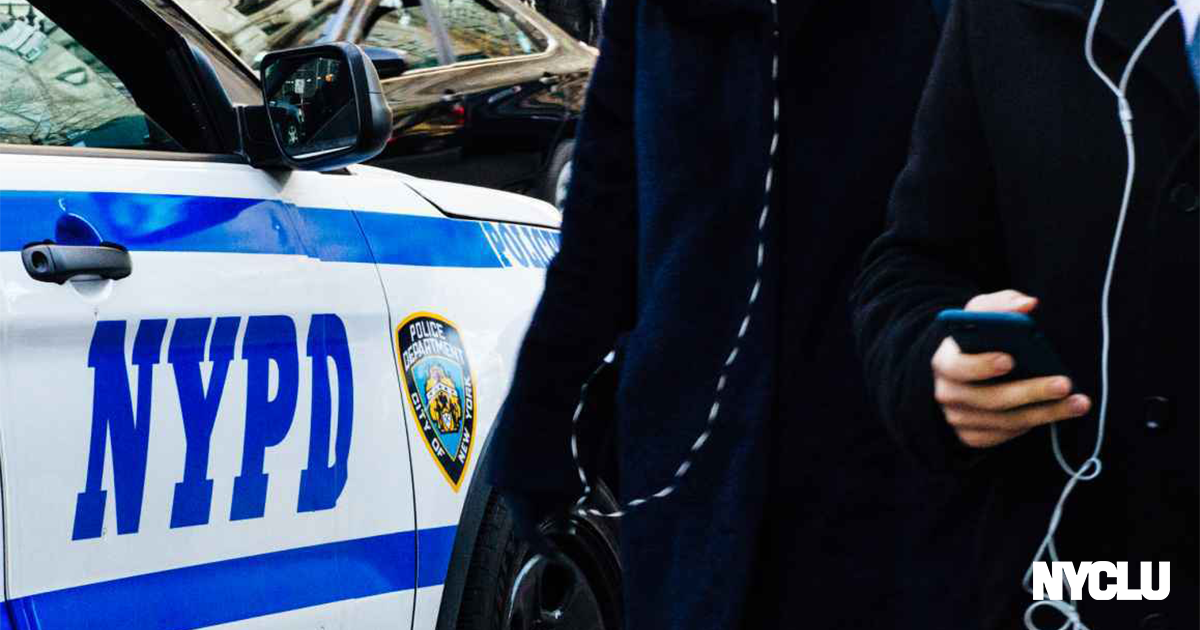The NYPD’s Secret Mass Surveillance Could Soon Be Uncovered

The brazen violence deployed by NYPD officers against demonstrators protesting police officers killing Black people has been on full display for weeks now.
But we know far less about what high-tech tools the NYPD might be secretly using to undermine the protests. That could soon change through legislation expected to pass today in the New York City Council.
Aside from the occasional whir of a drone or buzz of a helicopter flying overhead, any surveillance tools used on protesters could be hard to detect. The NYCLU has long worried about tools the NYPD uses on Black Lives Matter protesters like Stingrays – powerful surveillance devices about the size of a suitcase that can spy on calls or texts from nearby cell phones, jam cell service, and track the exact location of a call or text. The department has used Stingrays more than 1,000 times between 2008 and May of 2015 without a written policy or a warrant.
The department has also secretly rolled out x-ray vans – which utilize x-ray radiation to see inside cars and buildings – though the department has gone to great lengths to hide what they’re doing with these military vehicles.
To be sure, the NYPD also deploys plenty of easy-to-notice technologies against protesters, including spotlights and Rumbler sirens, used to disorient protesters.
Drones, Stingrays, and x-ray vans are just some examples of the military-grade surveillance equipment bought with our tax dollars, imported from the battlefield and unleashed in New York’s neighborhoods. These technologies make mass surveillance significantly easier for the police, and they may be the tip of the iceberg. All the while, the public remains in the dark about how, when, and on whom they are used.
These technologies make mass surveillance significantly easier for the police, and they may be the tip of the iceberg.
And while these devices pose a threat to the safety and privacy of all New Yorkers, people in heavily-policed communities – which are most often communities of color – are the biggest targets of the NYPD’s spying efforts.
In a report released in 2018, the NYCLU revealed that 85 percent of people in heavily policed communities told us they felt surveilled by police at times. Large percentages of New Yorkers in heavily policed communities also said they regularly saw NYPD surveillance tools like helicopters, floodlights, and watchtowers.
In 2017, the New York City Council introduced the Public Oversight of Surveillance Technology (POST) Act, which would establish a system of public oversight and input prior to NYPD implementation of surveillance technology.
The POST Act requires the NYPD to issue an impact and use policy for each piece of surveillance technology it employs. The policy would have to include important information about each surveillance tool, including its description, capabilities, guidelines for use, and security measures designed to protect any data it collects.
The NYPD would also need to evaluate and explain the possible impacts of the technology on New Yorkers’ privacy, and the NYPD Inspector General would be empowered to make sure the NYPD follows the policies and guidelines put in place by the bill.
After three years, and with New Yorkers in the streets demanding police accountability, the Council is slated to finally pass the POST Act today. It would then head to Mayor Bill de Blasio, who should sign the legislation into law.
When the POST Act was first introduced, the NYPD assured the public that the legislation was unnecessary, essentially because the department could be trusted to self-monitor its use of mass surveillance technology.
That was always untrue, and the events of the last several weeks should forever destroy the myth that the NYPD can police itself.
